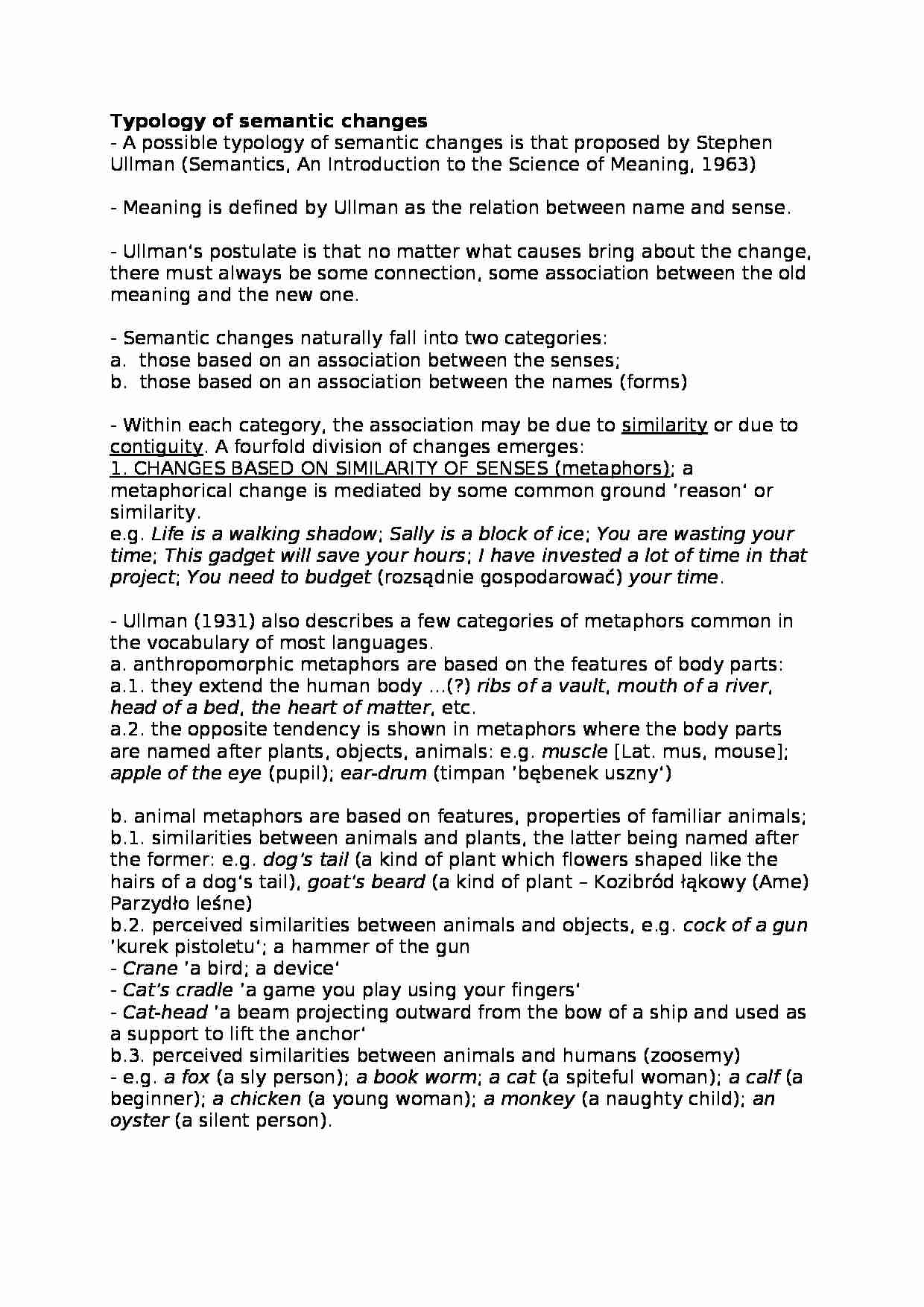To tylko jedna z 2 stron tej notatki. Zaloguj się aby zobaczyć ten dokument.
Zobacz
całą notatkę


Typology of semantic changes
- A possible typology of semantic changes is that proposed by Stephen Ullman (Semantics, An Introduction to the Science of Meaning, 1963)
- Meaning is defined by Ullman as the relation between name and sense.
- Ullman's postulate is that no matter what causes bring about the change, there must always be some connection, some association between the old meaning and the new one.
- Semantic changes naturally fall into two categories:
a. those based on an association between the senses;
b. those based on an association between the names (forms)
- Within each category, the association may be due to similarity or due to contiguity. A fourfold division of changes emerges:
1. CHANGES BASED ON SIMILARITY OF SENSES (metaphors); a metaphorical change is mediated by some common ground `reason' or similarity.
e.g. Life is a walking shadow; Sally is a block of ice; You are wasting your time; This gadget will save your hours; I have invested a lot of time in that project; You need to budget (rozsądnie gospodarować) your time.
- Ullman (1931) also describes a few categories of metaphors common in the vocabulary of most languages.
a. anthropomorphic metaphors are based on the features of body parts:
a.1. they extend the human body ...(?) ribs of a vault, mouth of a river, head of a bed, the heart of matter, etc.
a.2. the opposite tendency is shown in metaphors where the body parts are named after plants, objects, animals: e.g. muscle [Lat. mus, mouse]; apple of the eye (pupil); ear-drum (timpan `bębenek uszny')
b. animal metaphors are based on features, properties of familiar animals;
b.1. similarities between animals and plants, the latter being named after the former: e.g. dog's tail (a kind of plant which flowers shaped like the hairs of a dog's tail), goat's beard (a kind of plant - Kozibród łąkowy (Ame) Parzydło leśne)
b.2. perceived similarities between animals and objects, e.g. cock of a gun `kurek pistoletu'; a hammer of the gun
- Crane `a bird; a device'
- Cat's cradle `a game you play using your fingers'
- Cat-head `a beam projecting outward from the bow of a ship and used as a support to lift the anchor'
b.3. perceived similarities between animals and humans (zoosemy)
- e.g. a fox (a sly person); a book worm; a cat (a spiteful woman); a calf (a beginner); a chicken (a young woman); a monkey (a naughty child); an oyster (a silent person).
c. synesthetic metaphors (from synethesia = a subjective sensation or image of a sense (as of colour) other than the other (as of sound) being stimulated; a concomitant sensation):
... zobacz całą notatkę




Komentarze użytkowników (0)